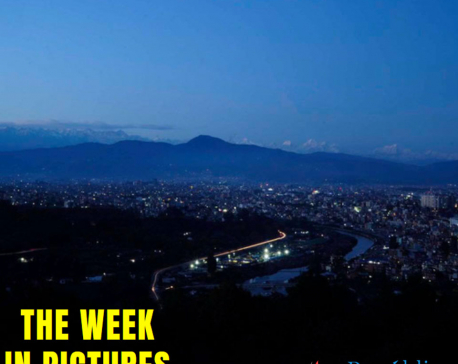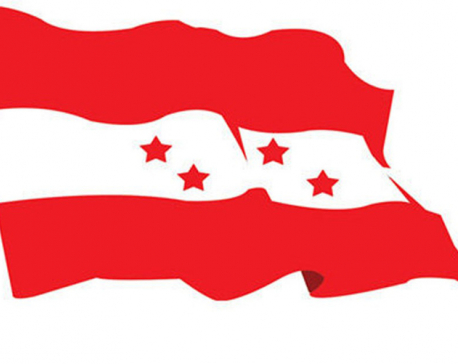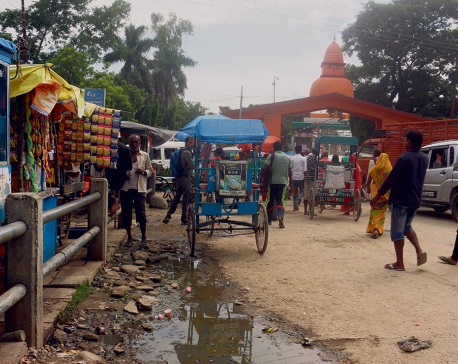
OR
Govt says lack of data on poor snagging distribution of relief
Published On: April 11, 2020 07:42 AM NPT By: RAJESH KHANAL
KATHMANDU, April 11: The government's much-talked-about identity card distribution for the poor was stuck in limbo for over eight years and now they are without proper grass-roots data for distributing edibles as relief to the needy.
In the face of the COVID-19 threat, the government has imposed a nationwide lockdown since the past three weeks. This has badly hit the poor who used to manage a hand to mouth existence with their daily earnings.
Although the government talks a lot about providing daily essentials to the poor people as relief, the genuinely needy are still hard pressed to lay their hands on government-distributed relief packages. The government now blames the situation mainly on the lack of proper records of such people.
Minister for Industry, Commerce and Supplies Lekhraj Bhatta, in an interview with Nepal Television, admitted failure to provide relief to the poor. “There have been some flaws in the distribution of foodstuff to daily wage earners. The government is trying to trace the genuinely needy, in cooperation with local governments,” he said.
According to the ministry, the government has through its Food Management and Trading Company and Salt Trading Corporation provided 1,113 tons of food to the local governments, targeting the poor. However, the question often arises whether the poor are actually getting the distributed foodstuff.
Had the government completed its task of identifying the poor and provided them with ID cards, needy people in the present crisis would be getting their relief. In the absence of such identity cards, even the relatively well-off are reportedly taking advantage of relief distribution.
Under its ambitious plan to provide the poor a number of benefits, the government in September 2012 launched a survey in 26 districts. ID cardholders were supposed to receive discounts in education, health facilities, transportation and foodstuffs, among other things. The government spent billions on the survey and the data processing alone, but without anything to show for it.Bhatta said all three tiers of government have maintained separate funds targeting the poor during the lockdown. “Apart from distributing food to poor people in mobile vans in Kathmandu Valley, the government has coordinated with local governments in other areas. Relief is even airlifted to the remote areas ,” he said.
Since the government enforced the lockdown on March 24, it has imported 37,334 tons of cereals as of Wednesday, targeting to maintain a smooth supply of essentials, according to the ministry. In addition, the country also imported 14,014 tons of pulses, 21,626 tons of vegetables, 5,962 tons of fruits and 80 tons of dairy products. Similarly, raw materials for medicines worth Rs 108.70 million and ready-to-use drugs worth Rs 569.70 million were also imported during the period.
Likewise, the two government-owned enterprises have 125,290 tons of rice, 7,294 tons of sugar, 16,000 tons of pulses and over 100,000 tons of salt in stock, according to the ministry. With these stocks in place, the government can maintain an adequate supply of rice for four months while the quantity of pulses and edible oils will meet demand for next three months, said Bhatta.
You May Like This

THE WEEK IN PICTURES
The Week in Pictures for the week May 3-9, 2020. ... Read More...

NC wants all-party monitoring mechanism at local level to ensure transparency in relief distribution
KATHMANDU, April 18: Expressing concerns over the irregularities and discrimination made in the distribution of relief materials, the main opposition,... Read More...

Nepal waiting to 'take a cue' from India to tackle COVID-19 pandemic
KATHMANDU, April 14: As Indian Prime Minister Narendra Modi is scheduled to address the nation on Tuesday morning to announce... Read More...




Just In
- Health ministry to conduct ‘search and vaccinate’ campaign on May 13
- Indian customs releases trucks carrying Nepali tea, halted across Kakarbhitta
- Silent period for by-election to begin from midnight
- SC issues short-term interim order to govt and TU not to take immediate action against TU legal advisor Khanal
- National consultation workshop advocates to scale up nutrition smart community in Nepal
- Patan High Court issues short-term interim order to halt selection process of NTB’s CEO
- NEPSE inches up 0.15 points; daily turnover increases to Rs 2.53 billion
- Bagmati Govt mandates tri-lingual signboards in offices














Leave A Comment